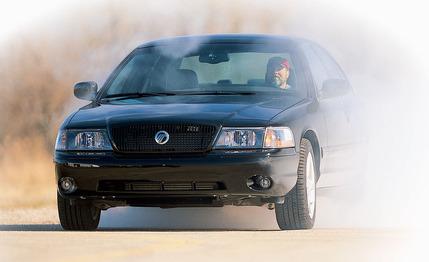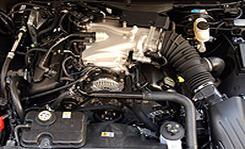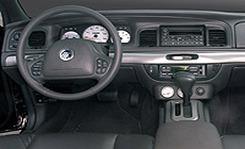
 Road Test
Road Test
It would be childish, unseemly, and heroically pointless to accuse Ford of a copycat crime. But, hey, childish and unseemly? That's us. So, here goes: We did it first.
In October 1997, a blizzard trapped me in Ogallala, Nebraska, with former senior editor Phil Berg. As the two of us viewed a World Series game, we hatched a scheme to build a hot-rod Crown Vic--a supercharged cop car that would eventually be known as the Lounge Lizard. That car took 13 months to build, ironically appearing in C/D the same month Ford announced its own version--November 1998.
See? We did it first.
Our Lizard was a hit. For one thing, it performed flawlessly as a 150-mph pace car in the Silver State Classic. For another, it was one of the rare project cars whose ride we didn't ruin. Still, the experience wasn't without trauma: Two SOHC V-8s died horrible deaths at the proving ground. And frankly, it's not often you hear an enthusiast exclaim, "What this world really needs is a good $53,470 Crown Vic."


Now Ford has produced its own monochromatic Lizard, with a far more digestible price: $34,495. Dearborn's version eschews the standard SOHC modular V-8 in favor of a naturally aspirated twin-cammer with 9.85:1 compression. Unfortunately, the marketing guys insisted the car be based not on a Vic but on the machine most likely to be parked at Sunset Acres. The idea was to buttress the hideously beleaguered Mercury brand. Very compassionate of them, although hot-rodding a Grand Marquis is a little like making bourbon out of Geritol.
Topped by an intake manifold fashioned by Jack Roush, this 32-valve aluminum-block V-8 produces 302 horsepower at 5750 rpm and 318 pound-feet of torque at 4250. This engine will also see service in the upcoming Lincoln Aviator sport-ute. It is a glorious alloy lump, with a glassy idle and a mellifluous contralto yowl.
The Marauder's body appears to have plunged into a vat of tar. Even the headlight reflectors are partly blacked out, as if in readiness for nighttime air raids. The taillights are lifted from a Crown Vic cop car, again revealing Ford's angst over any mental associations with the Marquis. In fact, everything is black except the 3.5-inch bazooka exhaust tips and the forged Alcoa five-spoke wheels, which are polished to a luster that surpasses chrome and approaches Hall of Mirrors.


Inside, the Marquis's Elk Lodge wood trim has mercifully been replaced by a handsome gray "dot matrix" motif, and someone has had the decency to install a half-dozen legible silver-faced gauges, including a 7000-rpm tach, an oil-pressure gauge, and a voltmeter--the latter duo situated low in the center stack. The front buckets are unique to the Marauder. Perhaps they shouldn't be. Their cushions are low and squishy, encouraging your feet to splay in an unnatural toes-out formation. What's more, the standard "Nudo" leather is slippery, such that your keister makes regular migrations toward the pedals. Fortunately, those pedals are adjustable, which is all that saves the seats from the sort of excoriation usually reserved for waiters who tell you their first name is Nudo.
Compared with previous Panther platforms, this one is the Rock of Gibraltar--more rigid by half, less prone to body shivers and subassembly squirm. That's mainly due to a new frame with straight side rails and beefier crossmembers. But some of the credit goes to the Tokico nitrogen, monotube shocks--mounted outboard of the frame rails at the rear--as well as firmer anti-roll-bar bushings in front, less rubbery body-to-frame bushings, rear load-leveling air springs, and front springs lifted from the Vic police cruiser.
All of which works effectively through 18-inch BFG rubber, delivering 0.86 g of grip. On back-country roads, you feel it instantly: The Marauder is firm, flat, stable, composed. Roll control is terrific for a sedan so large, especially useful in 50-to-70-mph sweepers, where the nose takes a set and is prescient about tracing a single, clean arc. On-ramps are a ball.